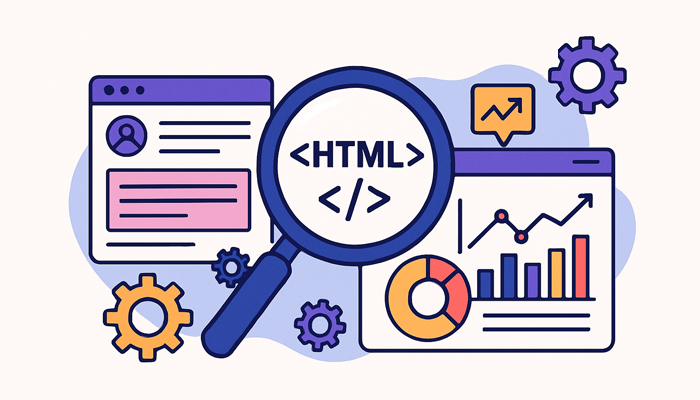Introduction
Imagine a library with thousands of books. The shelves are dusty, the lights are dim, and the catalogue system is outdated. Even though the collection is rich, few visitors manage to find the treasures hidden within. This is what a website looks like without SEO: full of potential but invisible to those searching. Technical audits and on-page optimisation are the caretakers of this library, ensuring the aisles are clean, the signboards are clear, and the most valuable books are placed right where people can see them.
For anyone stepping into the world of digital strategy, learning how to conduct these processes is like being handed the master key to unlock online visibility. That’s why a structured digital marketing course in Chennai often places immense emphasis on these skills, weaving both science and storytelling into the practice of optimisation.
The Technical Audit as a Detective’s Investigation
Think of a technical audit as an investigation carried out by a seasoned detective. The crime scene? A website struggling to rank. The detective’s job is to find clues—broken links, crawl errors, slow-loading pages, or duplicate content—that explain why the site isn’t thriving.
This process involves scanning the site with tools that mimic search engine crawlers. Are robots.txt files locking away critical content? Are images weighing down performance? Is mobile responsiveness up to par? Each answer uncovers another piece of the puzzle.
In practice, conducting a technical audit requires a blend of curiosity and precision. Much like a detective cross-examining witnesses, the marketer must test hypotheses until the real culprit is found. Students in a digital marketing course in Chennai quickly realise that no two audits are alike, and that adaptability is the most valuable skill in this stage.
On-Page Optimisation: The Stage Performance
Once the stage is set, it’s time for the performance. On-page optimisation is akin to a theatre play, where every actor—the title tag, the meta description, the header tags, the body text—must deliver their lines with clarity and purpose. If even one element is misaligned, the audience (or search engine) loses interest.
Crafting compelling title tags is like writing headlines for the front page of a newspaper. Meta descriptions become the teaser trailers that draw in the audience. Internal links serve as ushers guiding visitors to the next act. And keywords, when placed with finesse, act as subtle cues that ensure the story resonates with search engines without overwhelming the reader.
Storytelling here is crucial. Content should read smoothly, offering value and context, while quietly embedding optimisation principles.
Site Speed and User Experience: The Racecar Analogy
A sleek racecar with a powerful engine can’t win if it stalls at every turn. Similarly, a website with great content loses impact if pages take too long to load. Site speed is no longer a luxury—it’s the baseline expectation of users who refuse to wait more than a few seconds.
Technical audits expose slowdowns, but on-page strategies fix them: compressing images, using browser caching, and minimising JavaScript. Together, these adjustments transform the clunky racecar into a precision machine built for performance.
This isn’t just about impressing algorithms. A faster, smoother site respects the visitor’s time and creates a positive impression that lingers long after the visit.
Structured Data: Giving Search Engines a Map
Imagine trying to explore a foreign city without a map. You might stumble across landmarks, but the journey would be confusing and incomplete. Search engines face a similar struggle when parsing raw website content. Structured data acts as the map—highlighting important details such as reviews, product availability, or FAQs—making it easier for search engines to understand and showcase content effectively.
By incorporating schema markup, websites increase their chances of earning rich snippets and enhanced visibility. In training environments, learners see firsthand how a few lines of structured code can transform an ordinary search result into one that glows with star ratings, images, and detailed answers.
The Human Element in Technical Mastery
Beneath all the audits, codes, and optimisation lies a simple truth: websites are built for people, not machines. Technical SEO may speak in the language of algorithms, but its ultimate audience is human. Balancing both perspectives is what turns an ordinary practitioner into a skilled professional.
Classroom simulations, peer reviews, and real-world projects expose learners to this dual responsibility. It is not enough to fix a crawl issue or optimise a headline; one must do so while preserving readability, accessibility, and trust.
Conclusion
Mastering SEO technical audits and on-page optimisation is less about memorising checklists and more about developing a mindset—part detective, part storyteller, part engineer. Just as a well-maintained library draws eager readers, a well-optimised website attracts and retains engaged visitors.
For aspiring professionals, building this mindset through a structured digital marketing course in Chennai ensures they aren’t just following trends but shaping them. By learning to see websites as living systems that demand care and creativity, students walk away prepared to illuminate the digital shelves for audiences everywhere.

